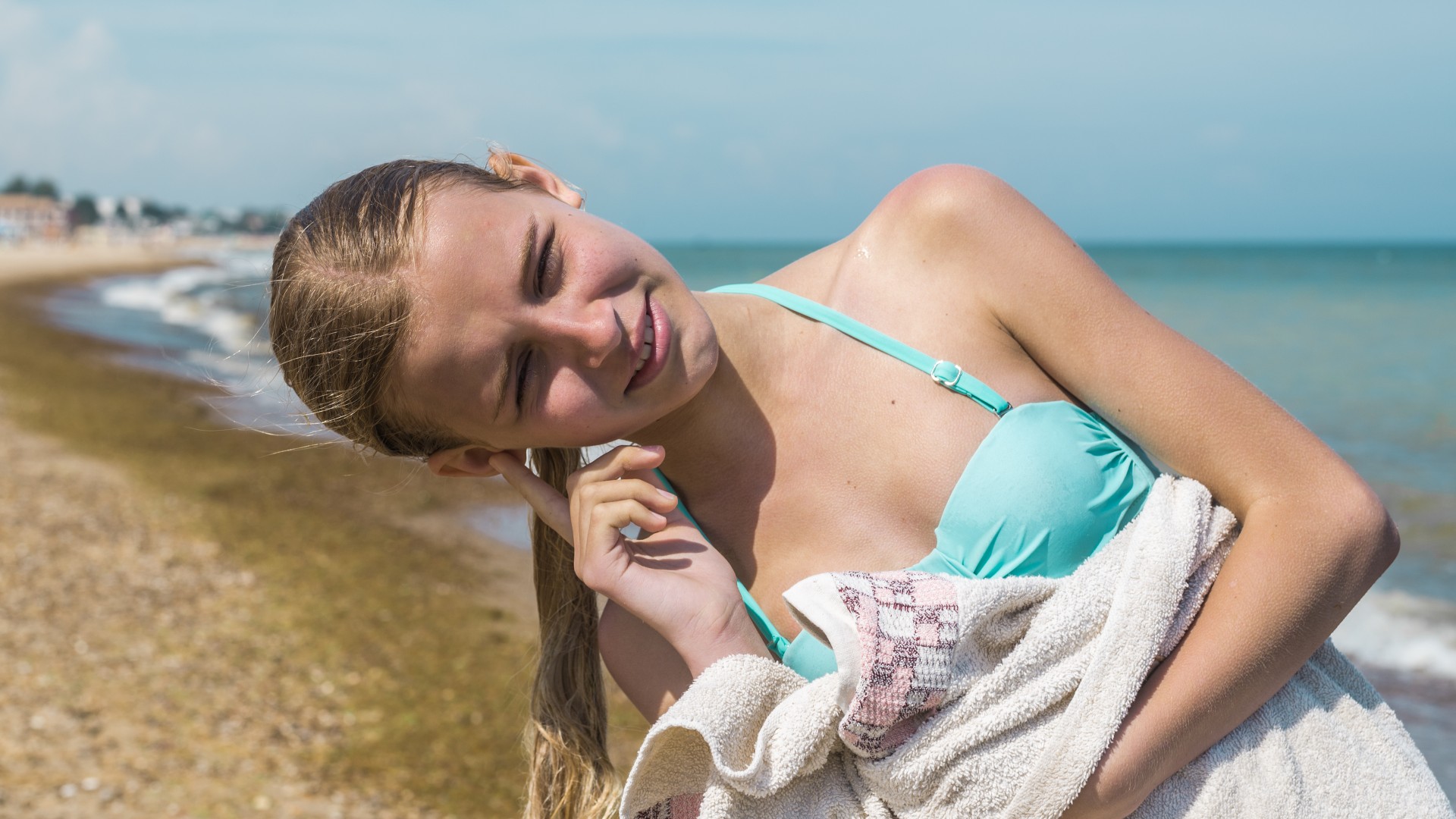How does water get stuck in your ear — and how do you get it out?
Whether it's from a day at the beach or a trip to the swimming pool, getting water stuck in your ear is very common. But how does it happen?
It's a familiar feeling — you've stepped out of the swimming pool and the sound of splashing water and children giggling has become ever so slightly muted because you've got water stuck in your ear. But how does this actually happen?
"Anytime you go swimming or if you put earbuds or even hearing aids in, things can get trapped in your ear," Dr. Christie DeMason, an assistant professor of otolaryngology at the University of North Carolina School of Medicine, told Live Science. When you wear earbuds or hearing aids, for example, sweat can flow into the ear and become trapped. When you go swimming or take a shower, water can usually flow easily in and out of your ear but occasionally gets trapped as well, she explained.
Water that makes it into the ear gets stuck in the ear canal, the passageway that links the outside of your ear to your eardrum; the canal is often described as "S-shaped," but its twists and curves slightly vary between people. If you are born with a very small ear canal, water can get stuck more easily, DeMason said. But water can also get stuck behind earwax, which normally helps stop the growth of bacteria and maintains the ears at a healthy acidic pH of around 5 to 5.7.
If this happens, then the accumulation of water and loss of earwax can provide a moist and more alkaline environment that encourages the growth of bacteria or yeast and lead to a condition known as swimmer's ear, or otitis externa, where the ear canal becomes red and swollen. Otitis externa isn't always caused by water in the ear, but that's a major risk factor.
Related: Why do we have earwax?
"Swimmer's ear is a fancy way of saying an infection of the outer ear canal," DeMason said. The condition is pretty common and can happen to anyone, she explained. Around 10% of people will experience it at some point in their lives, but the risk is five times greater for swimmers than non-swimmers, as repeated exposure to water can increase the chances that the ear canal becomes inflamed. This is both due to the moisture boosting the growth of microbes and to the fact that you might scratch your ear while attempting to release the water.
So what should you do if water gets stuck in your ear?
Get the world’s most fascinating discoveries delivered straight to your inbox.
"The easiest way is to put a hairdryer on a low setting and then kind of gently dry it out," DeMason said. You can also buy over-the-counter drying drops, she said.
If you're a keen swimmer and find that you tend to get a lot of ear infections, DeMason said you can also buy custom ear molds to stop water getting into your ear. "If you're worried about water getting in from showering, you can just get a cotton ball with some petroleum jelly and put it in your ear before you shower," she said.
The Centers for Disease Control and Prevention (CDC) also recommends using a bathing cap to stop water getting in your ears while swimming. After swimming or showering, the CDC advises towel-drying the ears and tilting the head back and forth to remove any excess water.
It's important to get the water out as soon as you're done swimming, DeMason explained. "The more it sits there, the more potential it is to get a bacterial or yeast infection." Mayo Clinic advises calling a doctor if you have even mild symptoms of swimmer's ear, such as itching and redness in the ear canal or discomfort that's made worse by pulling or pushing on the outer ear.
This article is for informational purposes only and is not meant to offer medical advice.

Emily is a health news writer based in London, United Kingdom. She holds a bachelor's degree in biology from Durham University and a master's degree in clinical and therapeutic neuroscience from Oxford University. She has worked in science communication, medical writing and as a local news reporter while undertaking NCTJ journalism training with News Associates. In 2018, she was named one of MHP Communications' 30 journalists to watch under 30.



